10 minutes
Graph Explorer
Unlock the world of Subgraphs and network data with Graph Explorer.
نظره عامة
Graph Explorer consists of multiple parts where you can interact with Subgraphs, delegate, engage participants, view network information, and access your user profile.
Inside Explorer
The following is a breakdown of all the key features of Graph Explorer. For additional support, you can watch the Graph Explorer video guide.
Subgraphs Page
After deploying and publishing your Subgraph in Subgraph Studio, go to Graph Explorer and click on the “Subgraphs” link in the navigation bar to access the following:
- Your own finished Subgraphs
- Subgraphs published by others
- The exact Subgraph you want (based on the date created, signal amount, or name).
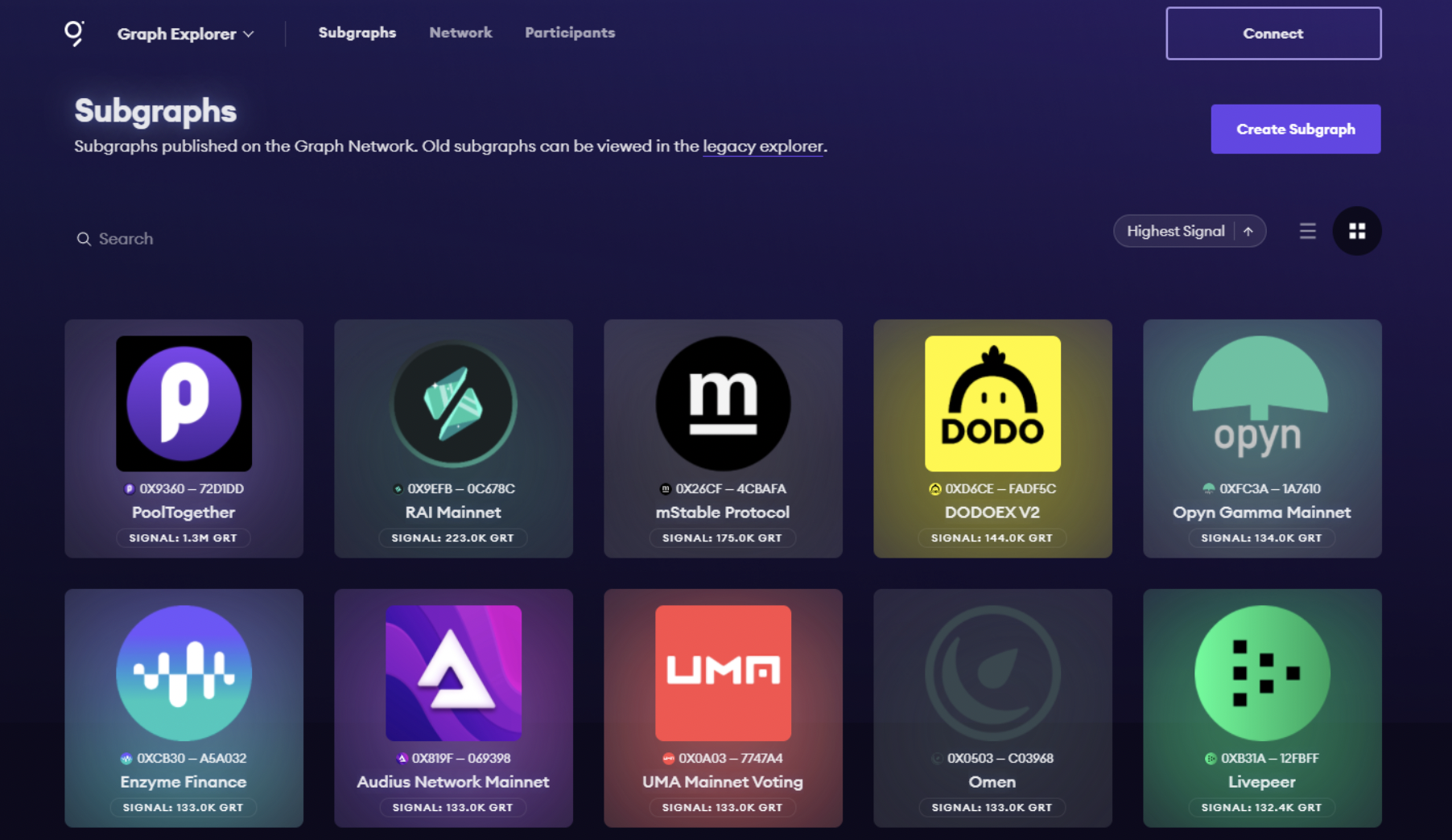
When you click into a Subgraph, you will be able to do the following:
- Test queries in the playground and be able to leverage network details to make informed decisions.
- Signal GRT on your own Subgraph or the Subgraphs of others to make indexers aware of its importance and quality.
- This is critical because signaling on a Subgraph incentivizes it to be indexed, meaning it’ll eventually surface on the network to serve queries.
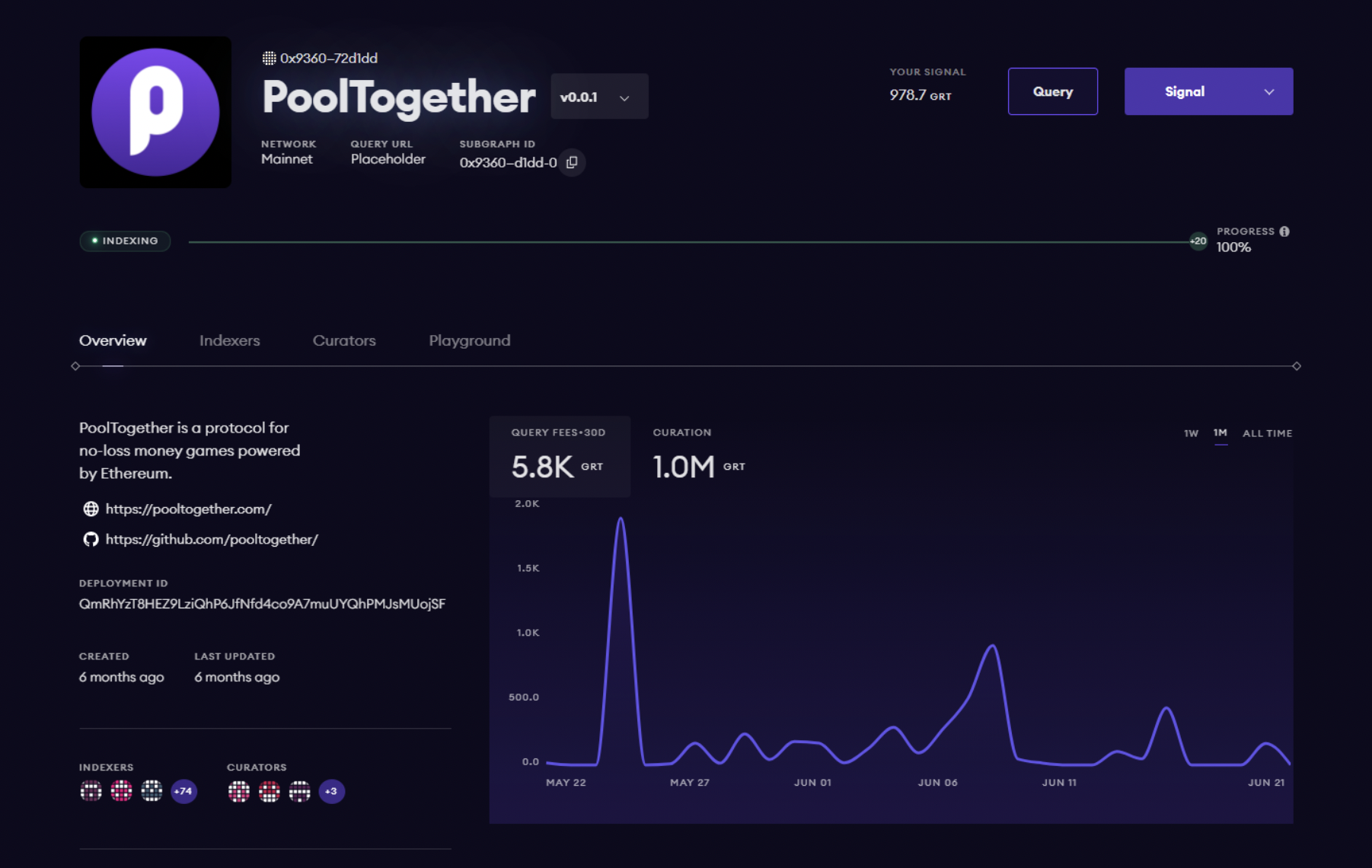
On each Subgraph’s dedicated page, you can do the following:
- Signal/Un-signal on Subgraphs
- اعرض المزيد من التفاصيل مثل المخططات و ال ID الحالي وبيانات التعريف الأخرى
- Switch versions to explore past iterations of the Subgraph
- Query Subgraphs via GraphQL
- Test Subgraphs in the playground
- View the Indexers that are indexing on a certain Subgraph
- إحصائيات subgraphs (المخصصات ، المنسقين ، إلخ)
- View the entity who published the Subgraph
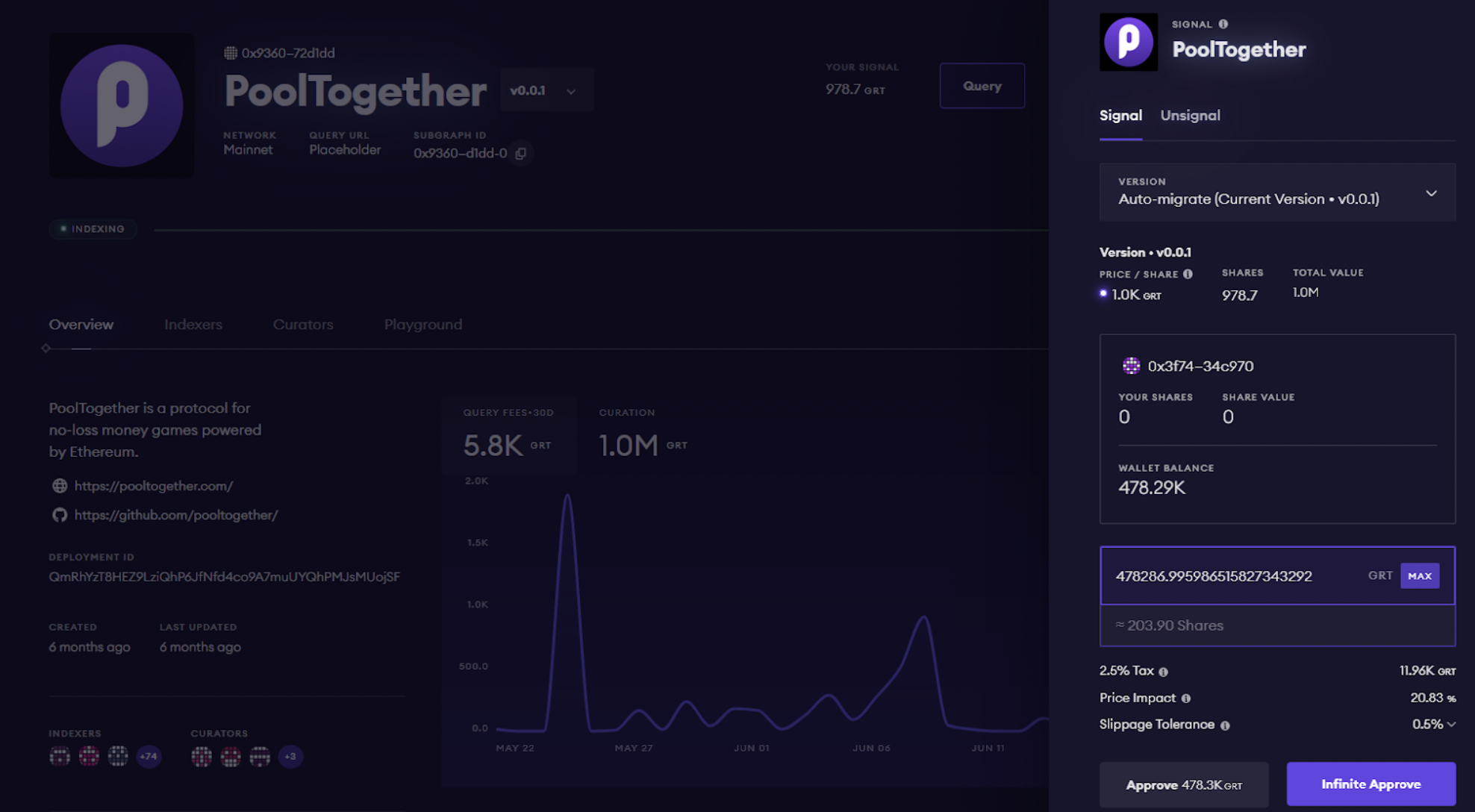
Delegate Page
On the Delegate page, you can find information about delegating, acquiring GRT, and choosing an Indexer.
On this page, you can see the following:
- Indexers who collected the most query fees
- Indexers with the highest estimated APR
Additionally, you can calculate your ROI and search for top Indexers by name, address, or Subgraph.
Participants Page
This page provides a bird’s-eye view of all “participants,” which includes everyone participating in the network, such as Indexers, Delegators, and Curators.
1. Indexers

Indexers are the backbone of the protocol. They stake on Subgraphs, index them, and serve queries to anyone consuming Subgraphs.
In the Indexers table, you can see an Indexers’ delegation parameters, their stake, how much they have staked to each Subgraph, and how much revenue they have made from query fees and indexing rewards.
Specifics
- Query Fee Cut - the % of the query fee rebates that the Indexer keeps when splitting with Delegators.
- Effective Reward Cut - the indexing reward cut applied to the delegation pool. If it’s negative, it means that the Indexer is giving away part of their rewards. If it’s positive, it means that the Indexer is keeping some of their rewards.
- Cooldown Remaining - the time remaining until the Indexer can change the above delegation parameters. Cooldown periods are set up by Indexers when they update their delegation parameters.
- Owned - This is the Indexer’s deposited stake, which may be slashed for malicious or incorrect behavior.
- Delegated - Stake from Delegators which can be allocated by the Indexer, but cannot be slashed.
- Allocated - Stake that Indexers are actively allocating towards the Subgraphs they are indexing.
- Available Delegation Capacity - the amount of delegated stake the Indexers can still receive before they become over-delegated.
- Max Delegation Capacity - the maximum amount of delegated stake the Indexer can productively accept. An excess delegated stake cannot be used for allocations or rewards calculations.
- Query Fees - this is the total fees that end users have paid for queries from an Indexer over all time.
- مكافآت المفهرس Indexer Rewards - هو مجموع مكافآت المفهرس التي حصل عليها المفهرس ومفوضيهم Delegators. تدفع مكافآت المفهرس ب GRT.
Indexers can earn both query fees and indexing rewards. Functionally, this happens when network participants delegate GRT to an Indexer. This enables Indexers to receive query fees and rewards depending on their Indexer parameters.
- Indexing parameters can be set by clicking on the right-hand side of the table or by going into an Indexer’s profile and clicking the “Delegate” button.
To learn more about how to become an Indexer, you can take a look at the official documentation or The Graph Academy Indexer guides.
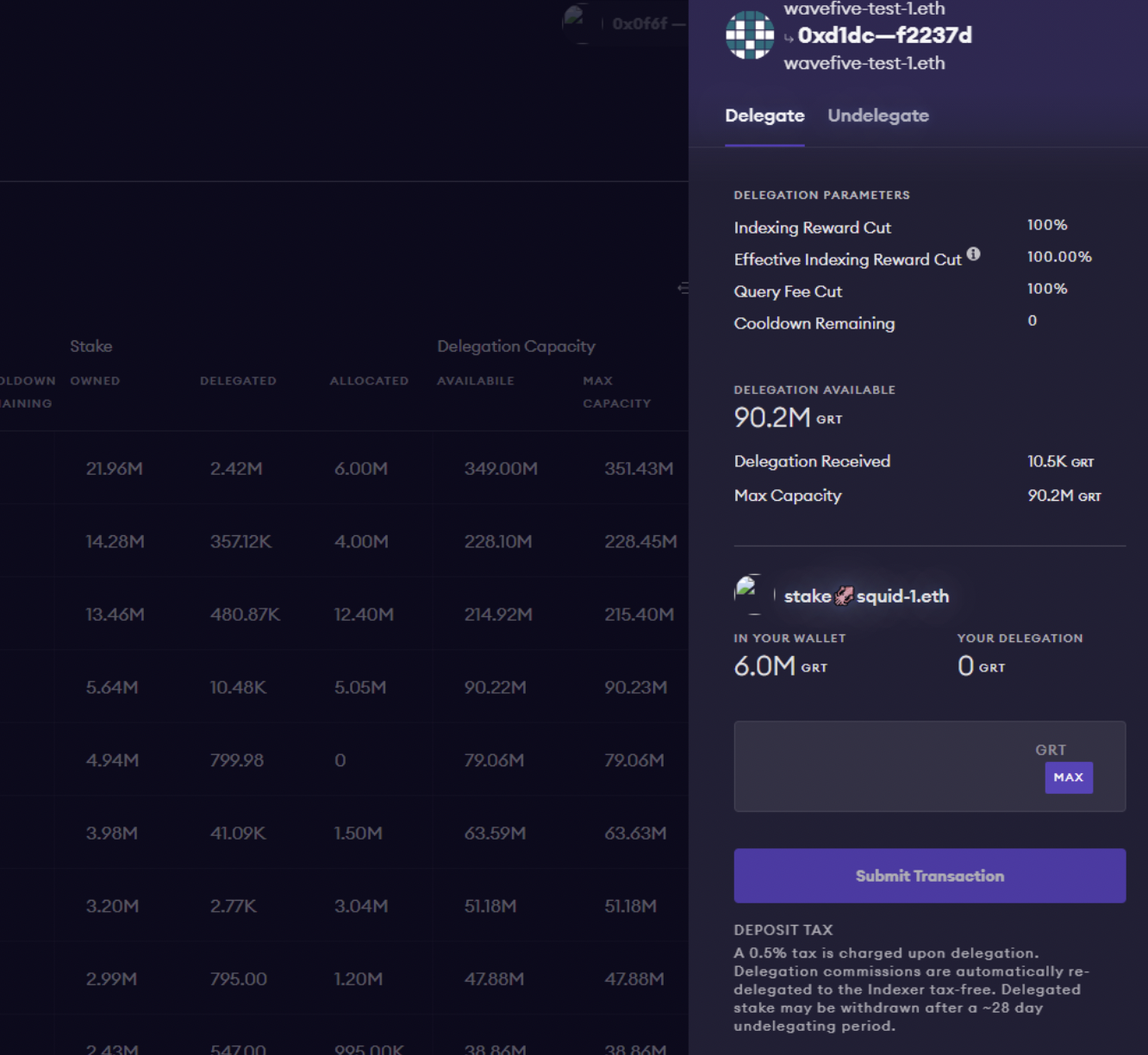
3. المفوضون Delegators
Curators analyze Subgraphs to identify which Subgraphs are of the highest quality. Once a Curator has found a potentially high-quality Subgraph, they can curate it by signaling on its bonding curve. In doing so, Curators let Indexers know which Subgraphs are high quality and should be indexed.
- Curators can be community members, data consumers, or even Subgraph developers who signal on their own Subgraphs by depositing GRT tokens into a bonding curve.
- By depositing GRT, Curators mint curation shares of a Subgraph. As a result, they can earn a portion of the query fees generated by the Subgraph they have signaled on.
- The bonding curve incentivizes Curators to curate the highest quality data sources.
In the The Curator table listed below you can see:
- التاريخ الذي بدأ فيه المنسق بالتنسق
- عدد ال GRT الذي تم إيداعه
- عدد الأسهم التي يمتلكها المنسق
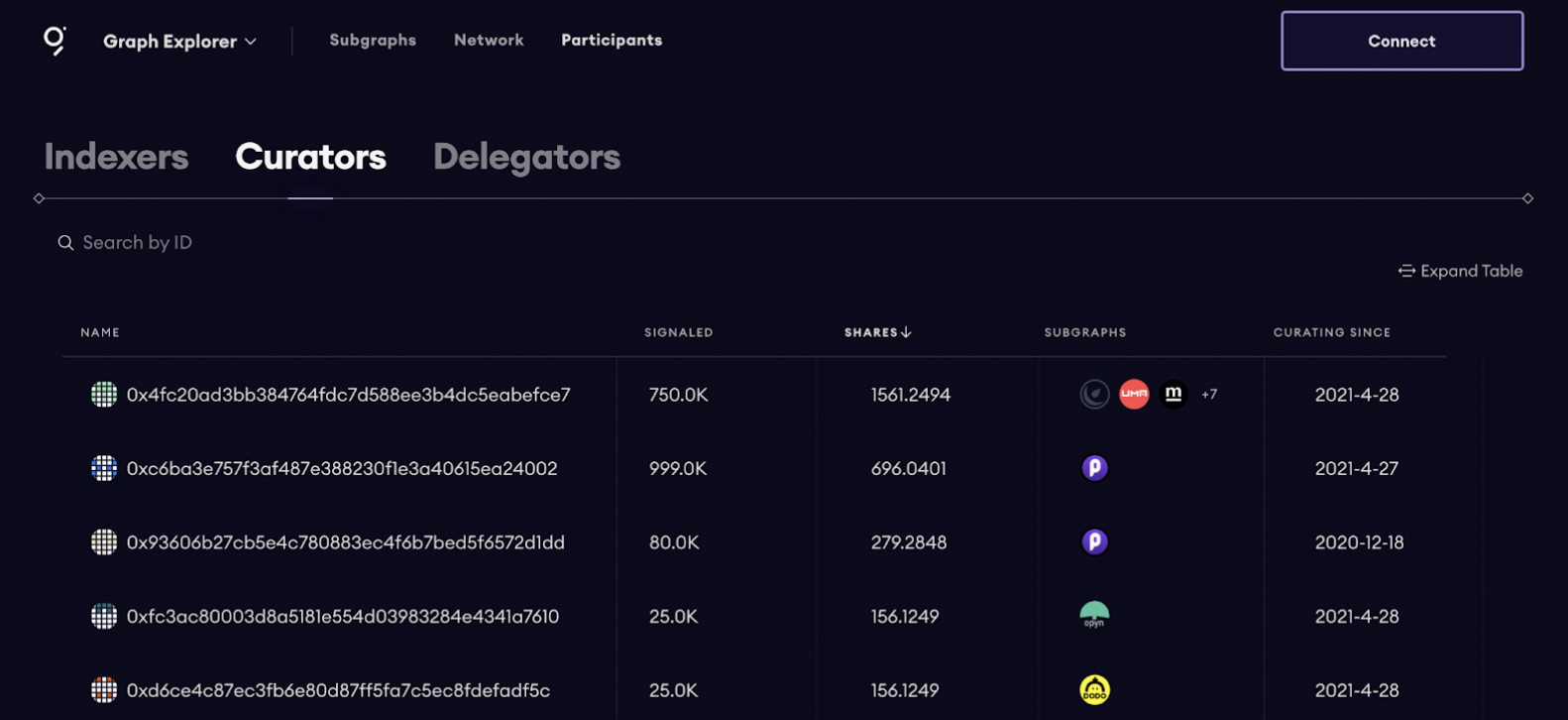
If you want to learn more about the Curator role, you can do so by visiting official documentation. or The Graph Academy.
3. المفوضون Delegators
Delegators play a key role in maintaining the security and decentralization of The Graph Network. They participate in the network by delegating (i.e., “staking”) GRT tokens to one or multiple indexers.
- Without Delegators, Indexers are less likely to earn significant rewards and fees. Therefore, Indexers attract Delegators by offering them a portion of their indexing rewards and query fees.
- Delegators select Indexers based on a number of different variables, such as past performance, indexing reward rates, and query fee cuts.
- Reputation within the community can also play a factor in the selection process. It’s recommended to connect with the selected Indexers via The Graph’s Discord or The Graph Forum.
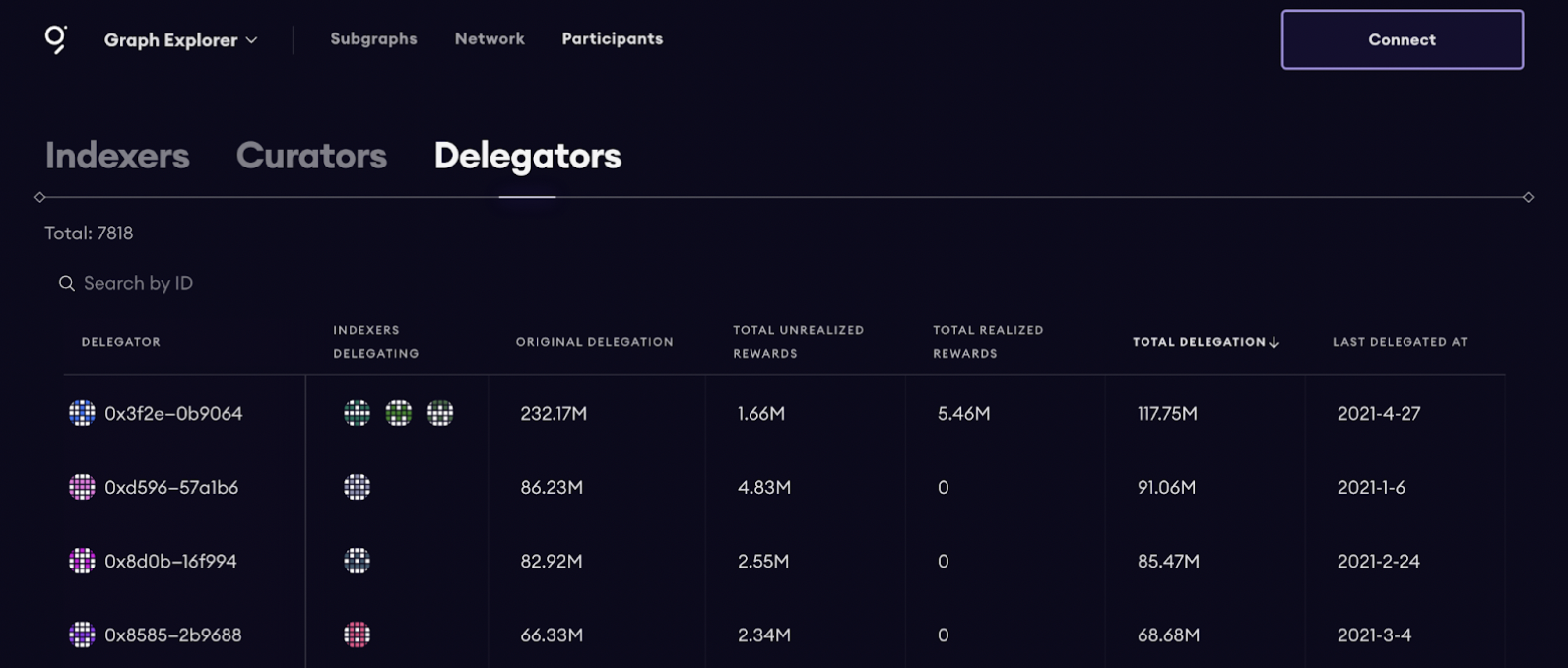
In the Delegators table you can see the active Delegators in the community and important metrics:
- عدد المفهرسين المفوض إليهم
- A Delegator’s original delegation
- المكافآت التي جمعوها والتي لم يسحبوها من البروتوكول
- المكافآت التي تم سحبها من البروتوكول
- كمية ال GRT التي يمتلكونها حاليا في البروتوكول
- The date they last delegated
If you want to learn more about how to become a Delegator, check out the official documentation or The Graph Academy.
Network Page
On this page, you can see global KPIs and have the ability to switch to a per-epoch basis and analyze network metrics in more detail. These details will give you a sense of how the network is performing over time.
نظره عامة
The overview section has both all the current network metrics and some cumulative metrics over time:
- إجمالي حصة الشبكة الحالية
- الحصة المقسمة بين المفهرسين ومفوضيهم
- إجمالي العرض ،و الصك ،وال GRT المحروقة منذ بداية الشبكة
- إجمالي مكافآت الفهرسة منذ بداية البروتوكول
- بارامترات البروتوكول مثل مكافأة التنسيق ومعدل التضخم والمزيد
- رسوم ومكافآت الفترة الحالية
A few key details to note:
- Query fees represent the fees generated by the consumers. They can be claimed (or not) by the Indexers after a period of at least 7 epochs (see below) after their allocations towards the Subgraphs have been closed and the data they served has been validated by the consumers.
- Indexing rewards represent the amount of rewards the Indexers claimed from the network issuance during the epoch. Although the protocol issuance is fixed, the rewards only get minted once Indexers close their allocations towards the Subgraphs they’ve been indexing. So, the per-epoch number of rewards varies (ie. during some epochs, Indexers might’ve collectively closed allocations that have been open for many days).
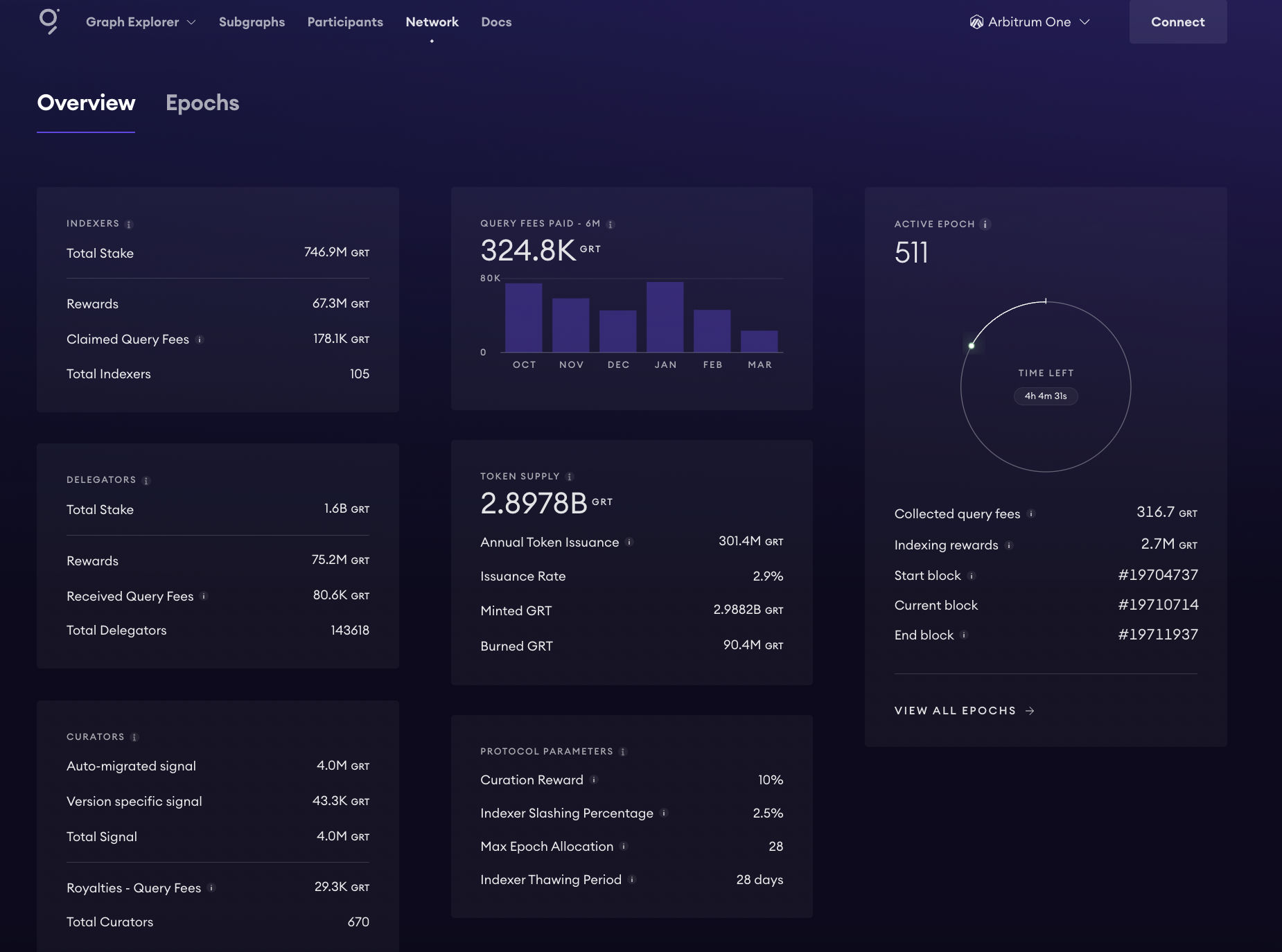
الفترات Epochs
In the Epochs section, you can analyze on a per-epoch basis, metrics such as:
- بداية الفترة أو نهايتها
- مكافآت رسوم الاستعلام والفهرسة التي تم جمعها خلال فترة معينة
- حالة الفترة، والتي تشير إلى رسوم الاستعلام وتوزيعها ويمكن أن يكون لها حالات مختلفة:
- الفترة النشطة هي الفترة التي يقوم فيها المفهرسون حاليا بتخصيص الحصص وتحصيل رسوم الاستعلام
- فترات التسوية هي تلك الفترات التي يتم فيها تسوية قنوات الحالة state channels. هذا يعني أن المفهرسين يكونون عرضة للشطب إذا فتح المستخدمون اعتراضات ضدهم.
- فترات التوزيع هي تلك الفترات التي يتم فيها تسوية قنوات الحالة للفترات ويمكن للمفهرسين المطالبة بخصم رسوم الاستعلام الخاصة بهم.
- The finalized epochs are the epochs that have no query fee rebates left to claim by the Indexers.
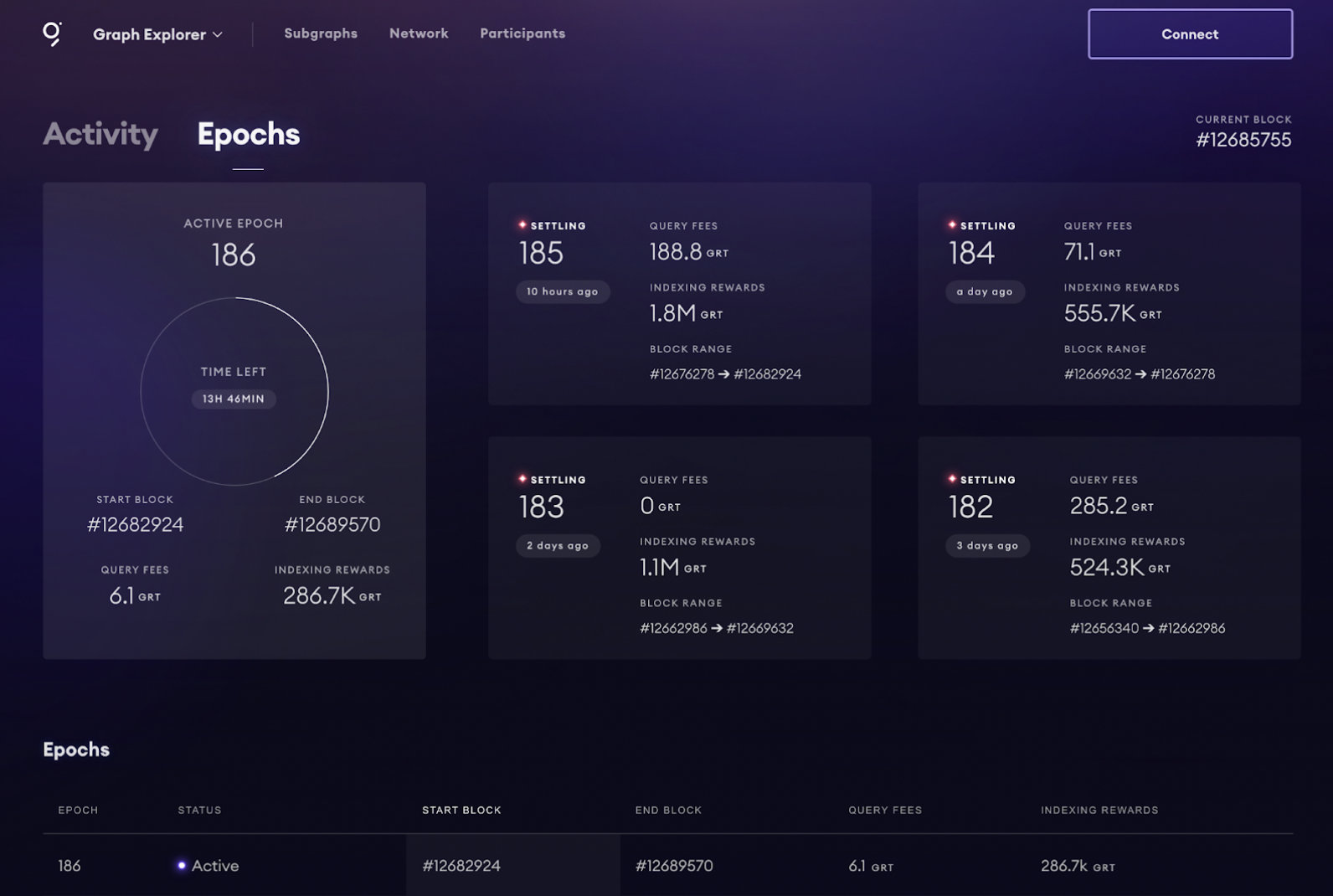
ملف تعريف المستخدم الخاص بك
Your personal profile is the place where you can see your network activity, regardless of your role on the network. Your crypto wallet will act as your user profile, and with the User Dashboard, you’ll be able to see the following tabs:
نظرة عامة على الملف الشخصي
In this section, you can view the following:
- Any of your current actions you’ve done.
- Your profile information, description, and website (if you added one).
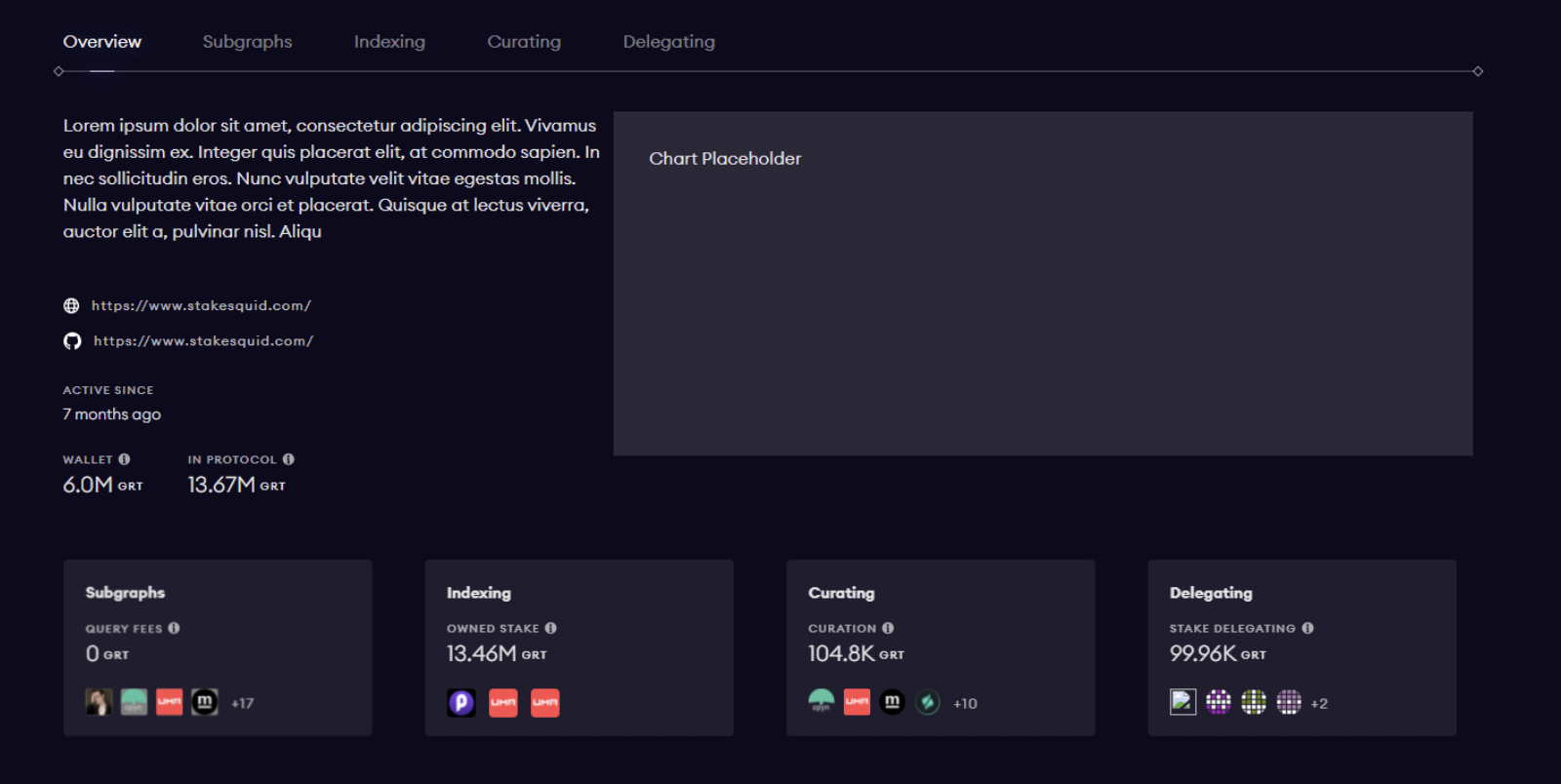
تبويب ال Subgraphs
In the Subgraphs tab, you’ll see your published Subgraphs.
This will not include any Subgraphs deployed with the CLI for testing purposes. Subgraphs will only show up when they are published to the decentralized network.
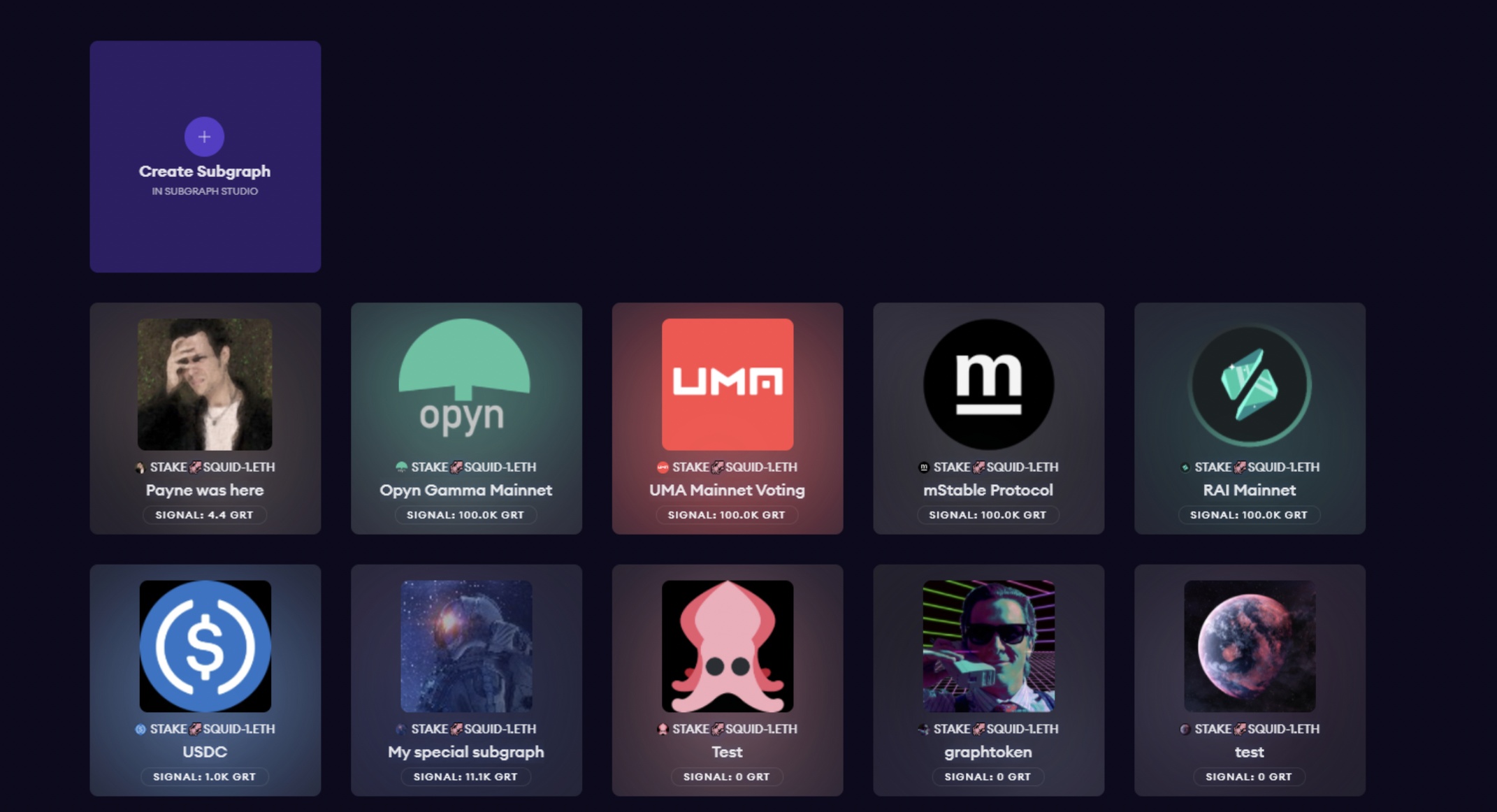
تبويب الفهرسة
In the Indexing tab, you’ll find a table with all the active and historical allocations towards Subgraphs. You will also find charts where you can see and analyze your past performance as an Indexer.
هذا القسم سيتضمن أيضا تفاصيل حول صافي مكافآت المفهرس ورسوم الاستعلام الصافي الخاصة بك. سترى المقاييس التالية:
- الحصة المفوضة Delegated Stake - هي الحصة المفوضة من قبل المفوضين والتي يمكنك تخصيصها ولكن لا يمكن شطبها
- إجمالي رسوم الاستعلام Total Query Fees - هو إجمالي الرسوم التي دفعها المستخدمون مقابل الاستعلامات التي قدمتها بمرور الوقت
- مكافآت المفهرس Indexer Rewards - هو المبلغ الإجمالي لمكافآت المفهرس التي تلقيتها ك GRT
- اقتطاع الرسوم Fee Cut -هي النسبة المئوية لخصوم رسوم الاستعلام التي ستحتفظ بها عند التقسيم مع المفوضين
- اقتطاع المكافآت Rewards Cut -هي النسبة المئوية لمكافآت المفهرس التي ستحتفظ بها عند التقسيم مع المفوضين
- مملوكة Owned - هي حصتك المودعة ، والتي يمكن شطبها بسبب السلوك الضار أو غير الصحيح
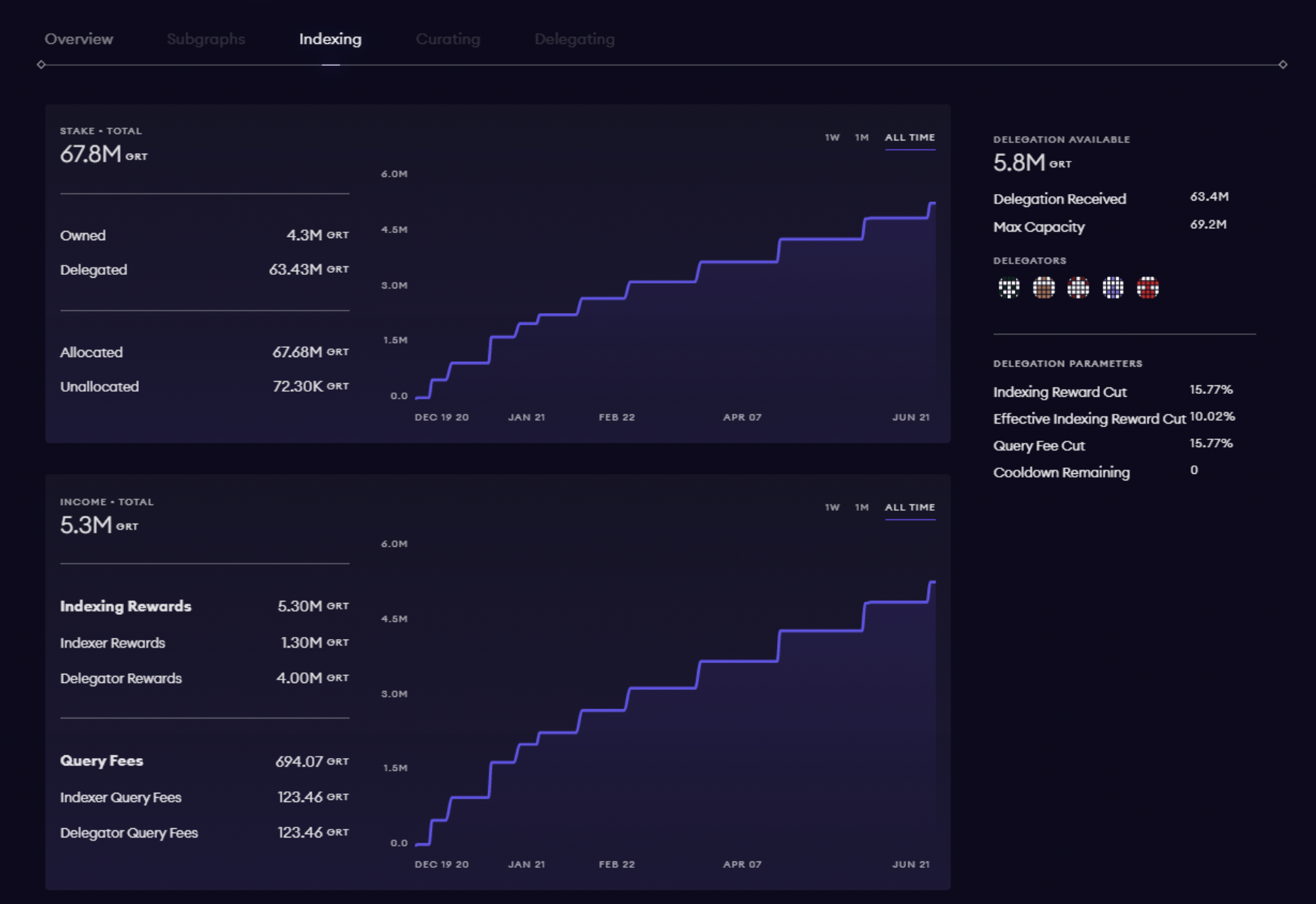
تبويب التفويض Delegating Tab
Delegators are important to the Graph Network. They must use their knowledge to choose an Indexer that will provide a healthy return on rewards.
In the Delegators tab, you can find the details of your active and historical delegations, along with the metrics of the Indexers that you delegated towards.
في النصف الأول من الصفحة ، يمكنك رؤية مخطط التفويض الخاص بك ، بالإضافة إلى مخطط المكافآت فقط. إلى اليسار ، يمكنك رؤية KPIs التي تعكس مقاييس التفويض الحالية.
مقاييس التفويض التي ستراها هنا في علامة التبويب هذه تشمل ما يلي:
- إجمالي مكافآت التفويض
- إجمالي المكافآت الغير محققة
- إجمالي المكافآت المحققة
في النصف الثاني من الصفحة ، لديك جدول التفويضات. هنا يمكنك رؤية المفهرسين الذين فوضتهم ، بالإضافة إلى تفاصيلهم (مثل المكافآت المقتطعة rewards cuts، و cooldown ، الخ).
باستخدام الأزرار الموجودة على الجانب الأيمن من الجدول ، يمكنك إدارة التفويض - تفويض المزيد أو إلغاء التفويض أو سحب التفويض بعد فترة الإذابة.
باستخدام الأزرار الموجودة على الجانب الأيمن من الجدول ، يمكنك إدارة تفويضاتك أو تفويض المزيد أو إلغاء التفويض أو سحب التفويض بعد فترة الذوبان thawing.
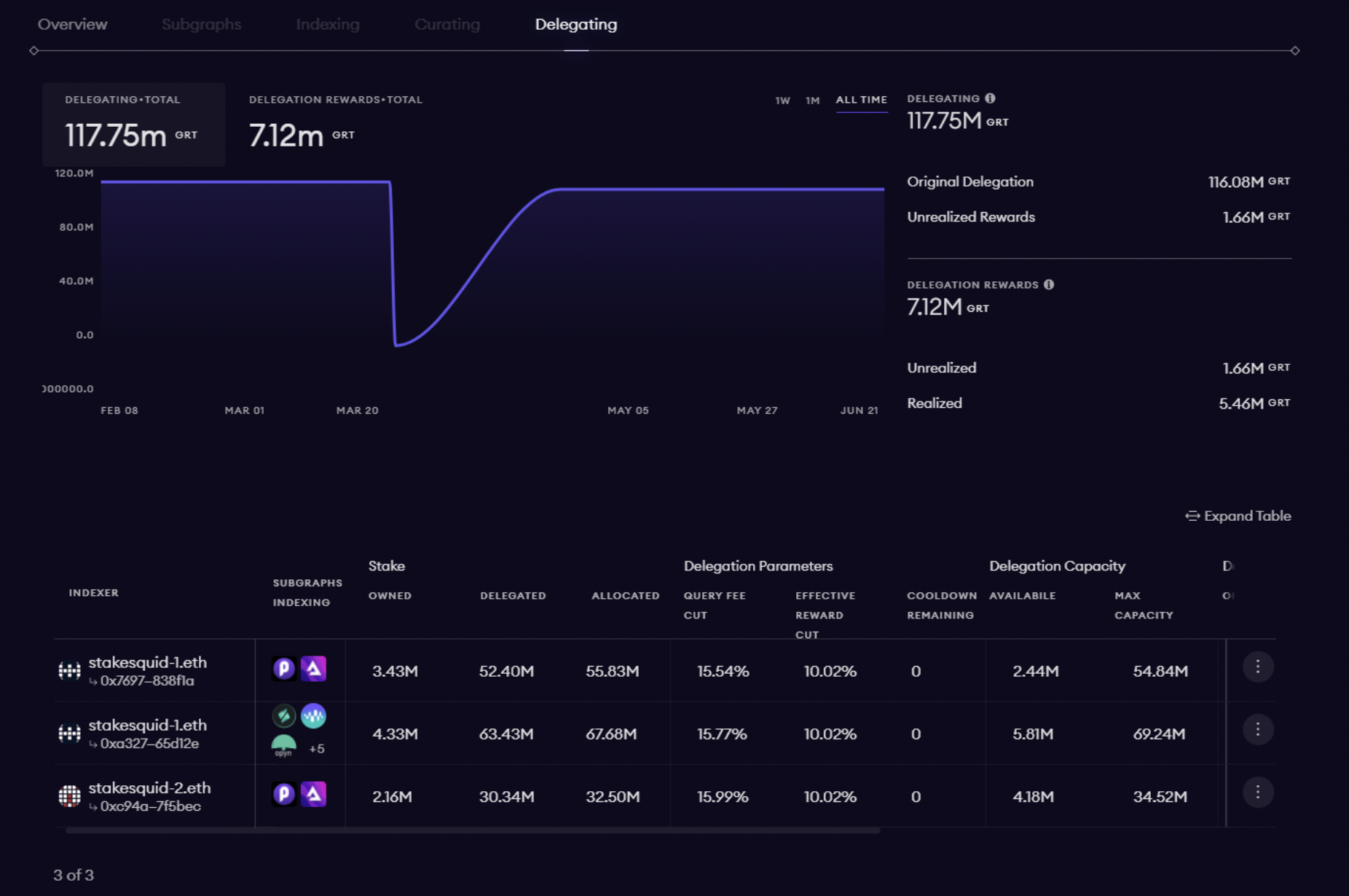
تبويب التنسيق Curating
In the Curation tab, you’ll find all the Subgraphs you’re signaling on (thus enabling you to receive query fees). Signaling allows Curators to highlight to Indexers which Subgraphs are valuable and trustworthy, thus signaling that they need to be indexed on.
ضمن علامة التبويب هذه ، ستجد نظرة عامة حول:
- All the Subgraphs you’re curating on with signal details
- Share totals per Subgraph
- Query rewards per Subgraph
- تحديث في تفاصيل التاريخ
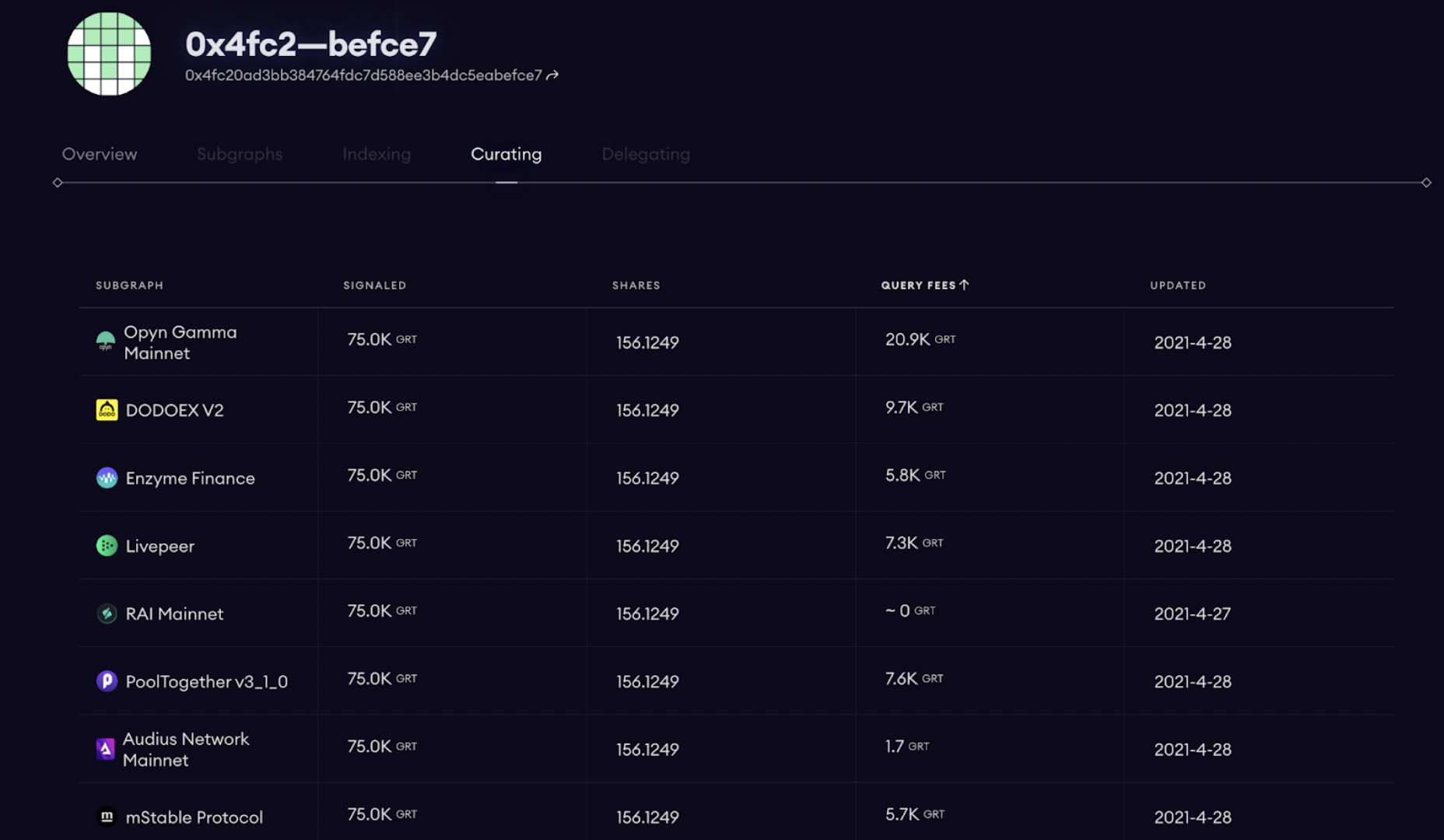
إعدادات ملف التعريف الخاص بك
ضمن ملف تعريف المستخدم الخاص بك ، ستتمكن من إدارة تفاصيل ملفك الشخصي (مثل إعداد اسم ENS). إذا كنت مفهرسا ، فستستطيع الوصول إلى إعدادت أكثر. في ملف تعريف المستخدم الخاص بك ، ستتمكن من إعداد بارامترات التفويض والمشغلين.
- Operators تتخذ إجراءات محدودة في البروتوكول نيابة عن المفهرس ، مثل عمليات فتح وإغلاق المخصصات. Operators هي عناوين Ethereum أخرى ، منفصلة عن محفظة staking الخاصة بهم ، مع بوابة وصول للشبكة التي يمكن للمفهرسين تعيينها بشكل شخصي
- تسمح لك بارامترات التفويض بالتحكم في توزيع GRT بينك وبين المفوضين.
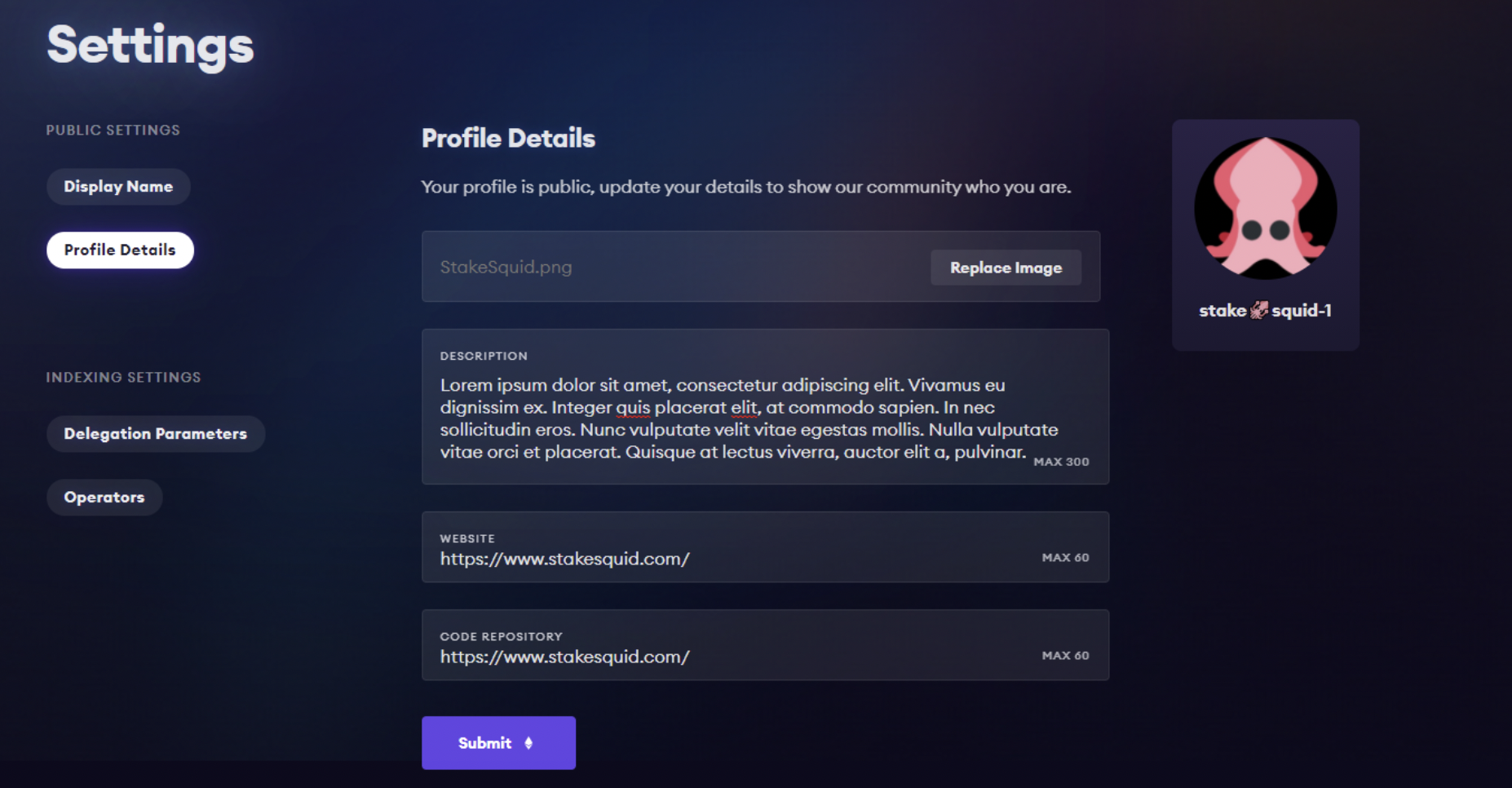
As your official portal into the world of decentralized data, Graph Explorer allows you to take a variety of actions, no matter your role in the network. You can get to your profile settings by opening the dropdown menu next to your address, then clicking on the Settings button.
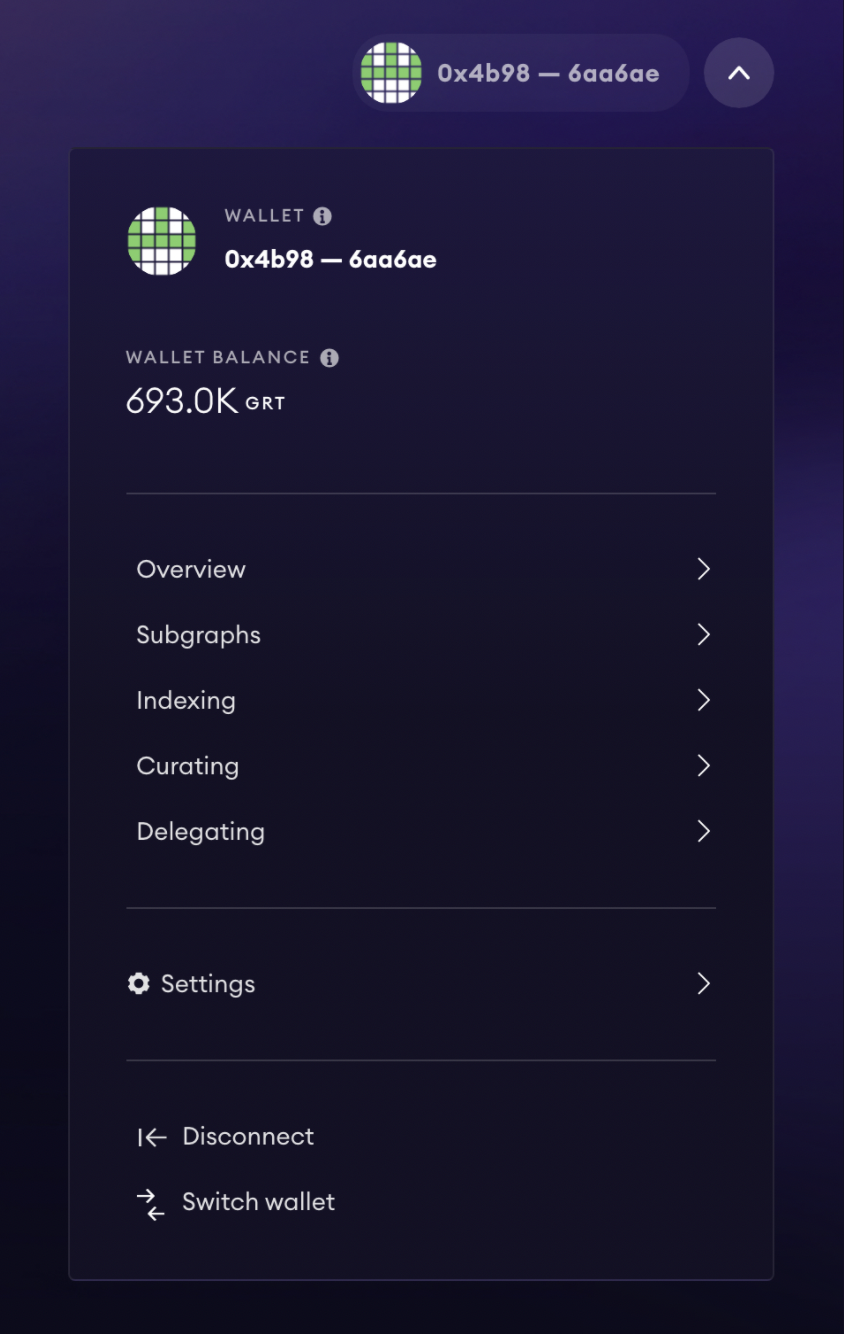
مصادر إضافية
Video Guide
For a general overview of Graph Explorer, check out the video below: